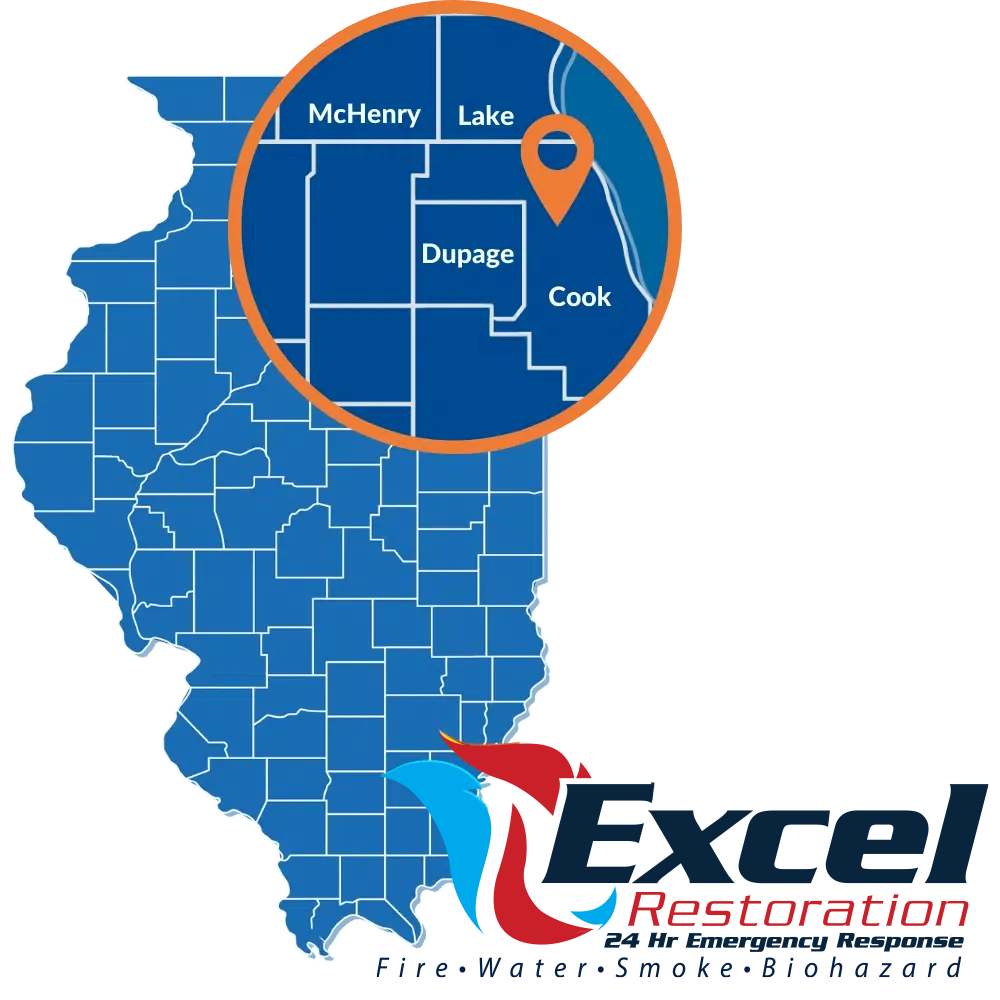When tragedy strikes, such as a fire in your home or office, the immediate concern is safety. However, have you considered the potential health risks associated with fire damage?
In this section, we will explore whether fire damage is toxic and look at the health risks it can pose. Understanding these risks is crucial for your well-being and safety.
Key Takeaways
- Fire damage can release toxic chemicals into the air, which can pose serious health risks.
- The chemicals released during a fire include carbon monoxide, formaldehyde, benzene, and volatile organic compounds (VOCs).
- Smoke inhalation resulting from fire damage can cause respiratory problems, such as asthma, bronchitis, and lung infections.
- Exposure to hazardous substances such as mold and asbestos can occur during and after a fire.
- Prioritizing safety measures and professional remediation can minimize risks from fire damage.
The Chemical Hazards of Fire Damage
When fire strikes, it not only causes visible damage but also releases harmful chemicals into the air. These chemicals can pose serious health risks, so it is essential to understand what they are and how they can affect you. Let’s explore the chemical hazards of fire damage:
| Chemical | Potential Effects on Human Health |
|---|---|
| Carbon Monoxide | Can cause headaches, nausea, weakness, dizziness, confusion, and even death. |
| Formaldehyde | Can cause respiratory irritation, coughing, and asthma-like symptoms. Long-term exposure may increase the risk of cancer. |
| Benzene | Can cause drowsiness, dizziness, headaches, and in high levels of exposure, loss of consciousness. |
| Volatile Organic Compounds (VOCs) | Can cause irritation of the eyes, nose, and throat, as well as headaches, dizziness, and nausea. Long-term exposure may increase the risk of cancer and liver or kidney damage. |
The toxic chemicals released during a fire can have both acute and chronic health effects on individuals exposed to them. The severity of these effects depends on several factors, including the length and level of exposure, age, and pre-existing medical conditions. Therefore, it is critical to take the necessary precautions to minimize exposure to fire damage and its chemical hazards.
Continue reading to learn about the health effects of fire smoke inhalation and the secondary health risks associated with fire damage.
Health Effects of Fire Smoke Inhalation
When a fire breaks out, the smoke that is produced contains a mixture of toxic gases and particles that can cause serious health problems if inhaled. Inhaling smoke can cause both short-term and long-term health effects, and these can vary depending on the length of exposure and the type of smoke inhaled.
Short-term health effects of fire smoke inhalation include difficulty breathing, coughing, chest pain, and irritation of the eyes and throat. In some cases, individuals may experience headaches, dizziness, and nausea. These symptoms usually improve once the person is removed from the source of smoke.
However, prolonged exposure to smoke can cause more severe health effects. The toxic chemicals in the smoke can damage the respiratory system and lead to chronic problems such as bronchitis, asthma, and other lung infections. In some cases, long-term exposure to fire smoke can cause cancer or even death.
Children, older adults, and individuals with pre-existing respiratory and cardiovascular conditions are particularly vulnerable to the health effects of fire smoke inhalation.
In addition to the physical health effects, smoke inhalation can also have a significant impact on mental health. Individuals who have experienced significant smoke inhalation may suffer from anxiety, depression, and post-traumatic stress disorder (PTSD).
It is crucial to seek medical attention immediately if you experience any symptoms related to fire smoke inhalation, including difficulty breathing, chest pain, or persistent coughing. If you have been exposed to fire smoke, take steps to avoid further exposure and seek the assistance of a professional remediation service for proper cleanup and air filtration.
Secondary Health Risks of Fire Damage
After a fire, the destruction caused by flames is just the beginning. Secondary health risks also pose a significant danger. Flames can destroy walls, ceilings, and insulation, which may release hazardous substances like asbestos and lead. Breathing in these substances can cause serious health problems.
In addition, mold can start growing on surfaces that have been exposed to water damage from firefighting efforts. Mold can trigger allergies, irritate the skin, eyes, and lungs, and cause respiratory infections.
To protect yourself and your family from these secondary health risks, have your property inspected for asbestos and lead by a qualified professional. Clean up any debris and thoroughly dry all surfaces susceptible to mold growth using a high-efficiency particulate air (HEPA) vacuum.
Protect your health and well-being by taking proactive steps to prevent secondary health risks caused by fire damage.
Conclusion
As we have discussed in the preceding sections, fire damage poses significant health risks that can be toxic to you and your loved ones. The release of toxic chemicals, smoke inhalation, and exposure to secondary hazards can all lead to severe health complications that require prompt attention.
To mitigate these risks effectively, it is crucial to prioritize safety measures. Proper ventilation, prompt cleanup, and professional remediation are necessary steps to take. Always seek professional help for cleanup and remediation, as DIY efforts can often lead to more health hazards.
By understanding the potential toxic nature of fire damage and taking proactive steps to protect your well-being, you can ensure the safety of yourself and your loved ones. Remember, prevention is key, and knowledge is your best weapon against these health risks.
Stay informed, stay safe, and take action when needed to protect yourself from fire damage and its associated health risks.
FAQ
Are the chemicals released during fire damage toxic?
Yes, the chemicals released during fire damage can be toxic. Carbon monoxide, formaldehyde, benzene, and volatile organic compounds (VOCs) are among the toxic chemicals released into the air during a fire.
What are the potential health effects of inhaling fire smoke?
Inhaling fire smoke can lead to various health effects, including respiratory problems like asthma, bronchitis, and lung infections. It can also have long-term consequences and potential complications.
Are there any secondary health risks associated with fire damage?
Yes, fire damage can lead to secondary health risks. Exposure to mold, asbestos, and other hazardous substances released during the fire or firefighting efforts can pose additional health hazards.
How can I mitigate the health risks of fire damage?
To mitigate the health risks of fire damage, it is important to prioritize safety measures such as proper ventilation, prompt cleanup, and professional remediation. Taking proactive steps to protect your well-being and that of your loved ones is crucial.

















